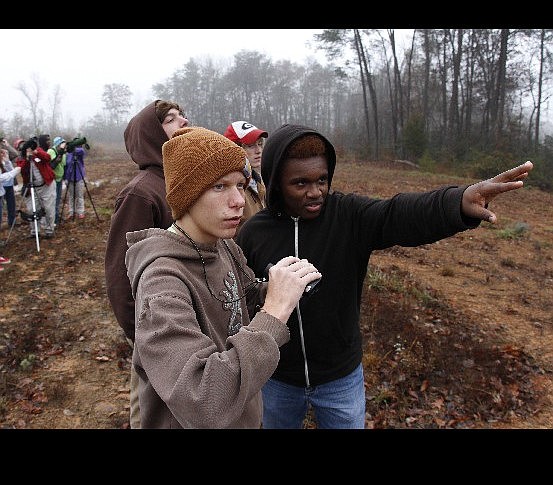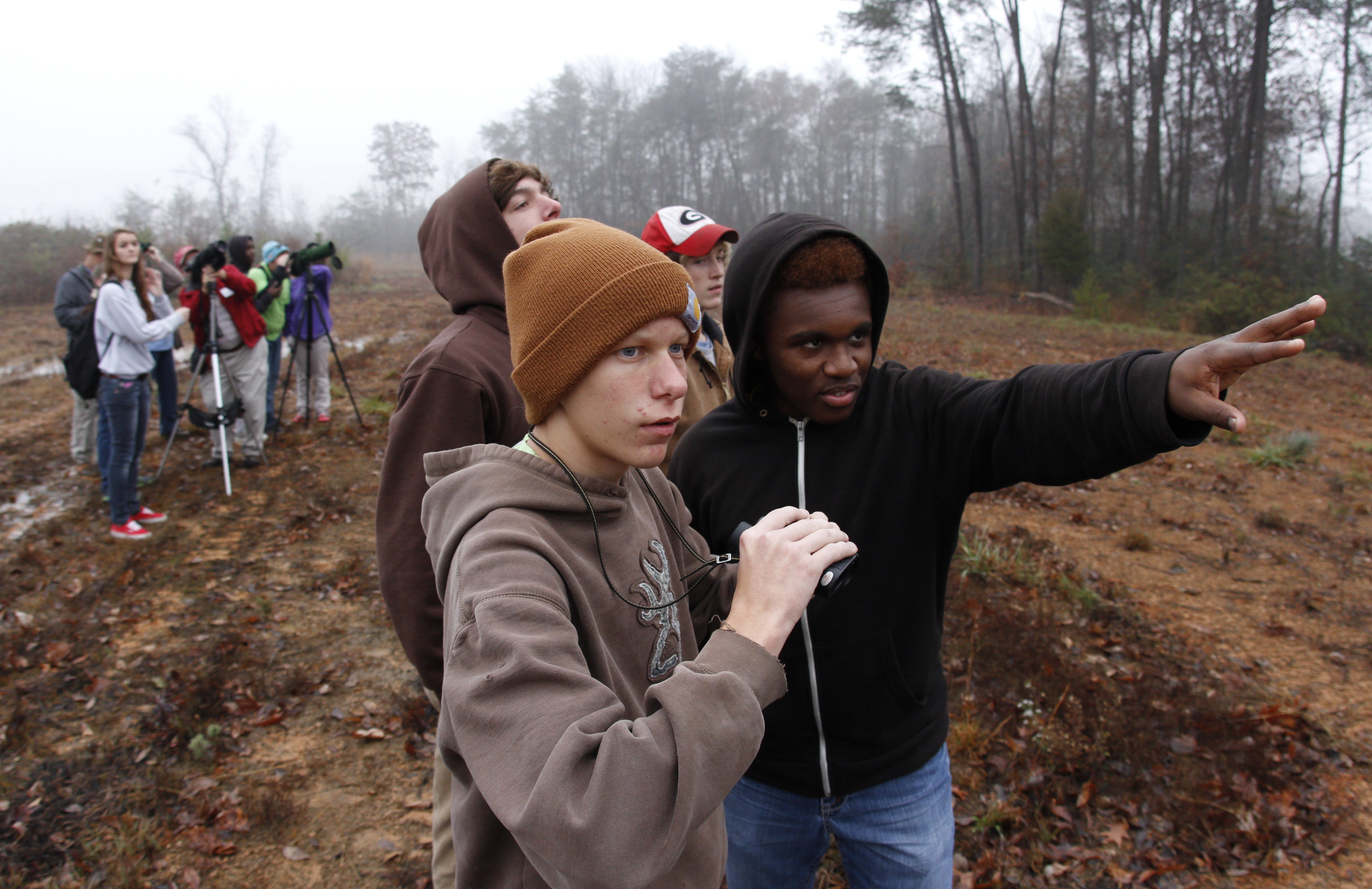The birds are all right: Ivy Academy students document their finds
Thursday, December 5, 2013
CHATTANOOGA CHRISTMAS BIRD COUNTWhat: Annual citizen survey of birds in Chattanooga area, sponsored by National Audubon SocietyWhen: Dec. 14Where: Seven-mile radius of Chickamauga DamHow much: FreeRegistration: Contact Kevin Calhoon at Chattanooga Audubon Society, 423-785-4070.
Ivy Academy's second annual bird count was over when David Aborn alerted on something like a pointer.
An invisible line ran from his right index finger to a little blue and white bird perched on a power line.
"Do you see that?" said Aborn, professor of biology and environmental science at the University of Tennessee at Chattanooga.
Binoculars up.
It was a bluebird. But it was a halfway white bird, too.
It was leucistic, or had reduced pigmentation because of a gene alteration.
And it was the first leucistic bluebird that Aborn has seen in 35 years of birdwatching.
Perfect timing.
Wednesday morning, Ivy Academy's 190-plus students tromped around Soddy-Daisy in the fog to find birds. And count them. And then write down what they saw.
Finding birds and documenting them should tell environmental scientists how healthy the ecosystem is.
"Birds are really the canary in the coal mine," said Kyle Simpson, a Chattanooga Audubon Society member and community volunteer who led students on a bird-finding walk.
He said an area's birds are "very important. Not just the numbers but the distribution."
The point is to keep an up-to-date log of what the birds are up to, where they are and what weather has them out and about.
Then in 50, 100, 150 years from now, environmental scientists can look back and see if things have changed, and if so, how much.
And the best way to get that info is old-fashioned walking, watching and writing.
In Soddy-Daisy, on a humid December morning, bird counters know to look for a great blue heron or two. A wild turkey. Some red-tailed hawks soaring around. Maybe a bald eagle. Starlings.
It doesn't sound like too glorious a job at first.
But even the doubters crossed over Wednesday morning.
"I didn't think we were going to find any birds because of the weather," said Aaron Bynum, an Ivy Academy freshman.
But a little stretch of creek bank near Dayton Boulevard bore fruit -- or rather, feathers.
"I was the first to hear it, and it was really close," he said.
A big wild turkey skirted around in the woods nearby. Documented.
Tyler Standridge, another freshman, saw a couple of northern cardinals -- the ones with the pointed red head feathers, he explained.
And lots of European starlings. Their defining factor: "They're really small and black," he said.
Ivy Academy's results don't get turned into any larger societies. The students are using their count as an educational opportunity.
Still, Standridge was pleased with his findings. His bird expert and group leader explained how the weather might affect the day's findings.
"Birds are just like humans," Standridge said. "They don't go out when it's cruddy outside."
They prefer to hang out in the nest. Watch a little Nestflix.
Standridge fought a smirk but finally gave in. Nestflix. Funny.
But seriously, renewed thought and curiosity about birds is exactly what the bird count directors want.
"It's easier for them to be engaged the more they know," said Simpson. "But somewhere along the way you've got to introduce them to it."
Then you hope they carrion the work.
Contact staff writer Alex Green at agreen@timesfreepress.com or 423-757-6731.

